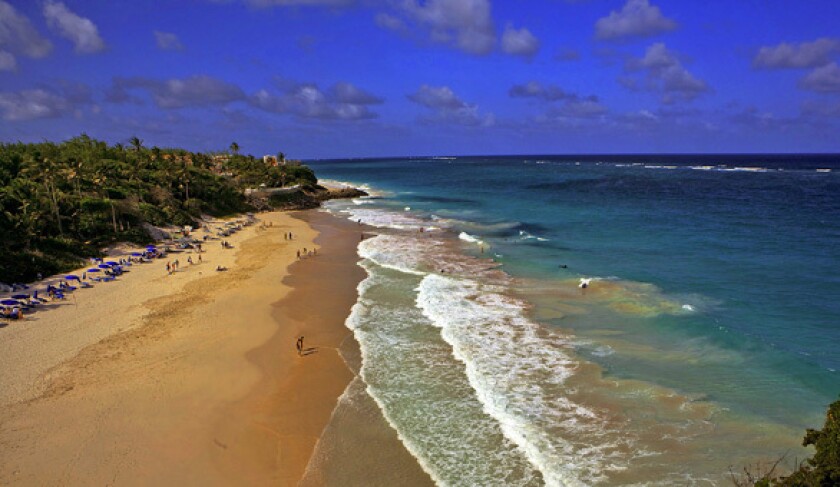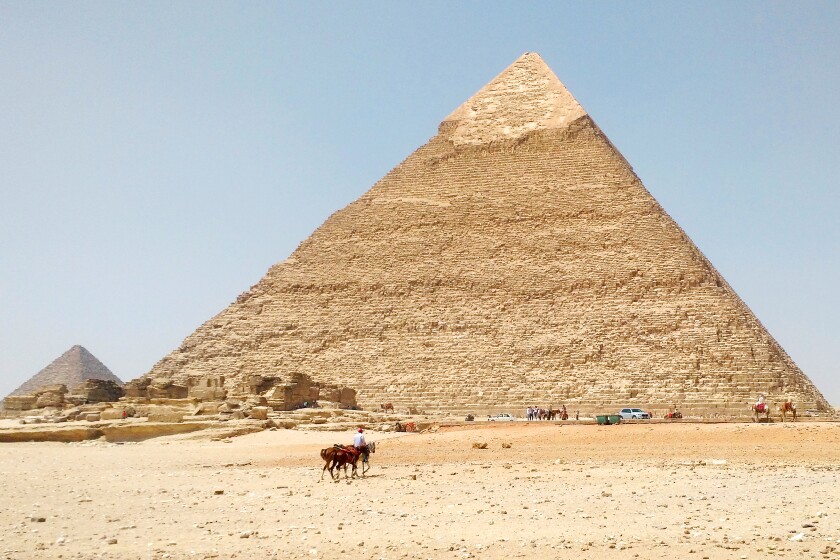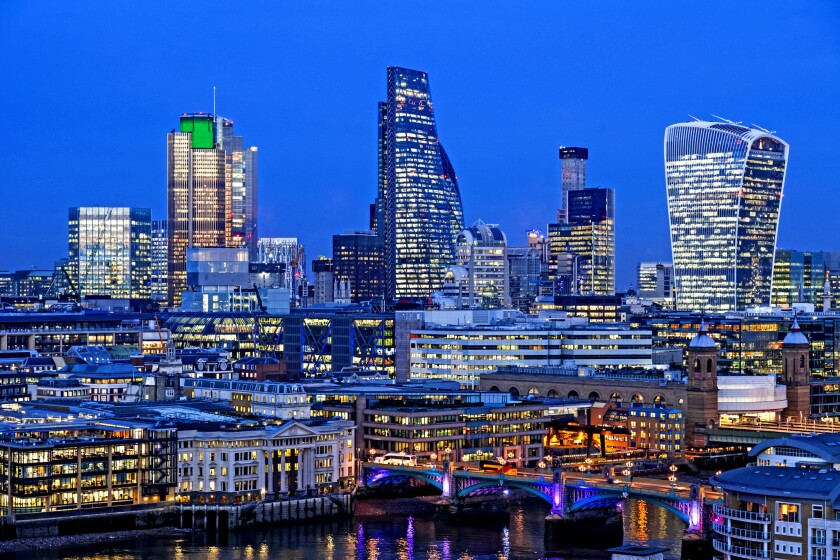Dozens of countries in Europe and Asia remain off-limits for American travelers as the world continues to struggle with the COVID-19 pandemic. Other countries do remain open, with and without quarantine, to Americans who can meet certain conditions.
Many, such as Albania, are off the beaten path for most Americans. Others, such as Mexico, are more familiar. At least two of those nations, Aruba and Costa Rica, have different policies depending on which U.S. state you are from.
Unfortunately, you won’t find Canada on the open list. Canada has banned most foreign nationals, including U.S. citizens, from entering its territory. There are exceptions for some students and people with Canadian family, but otherwise, the ban on nonessential travel is firm.
The U.S.’s other neighbor, Mexico, requires no test and no quarantine for those traveling by air. Under a pact the two countries have been renewing monthly, U.S. travelers are forbidden from traveling by land across the border for nonessential reasons, but no such ban applies to those who fly. That large loophole, by the way, is often unacknowledged in Department of Homeland Security communications.
Regarding those European nations: If you aren’t familiar with the term “Schengen countries,” you should be. The term refers to 26 European Union nations that are acting collectively when it comes to allowing travelers to safely cross their borders without spreading COVID-19. Americans currently are not allowed in; residents of Canada, New Zealand and Japan are. The list is reviewed every two weeks.
In the Asia-Pacific region, too, many doors are also closed. American tourists are not allowed to visit Japan, Vietnam, Thailand and the Philippines. The same goes for Australia and New Zealand.
What to consider before you go
Before you make plans for going abroad, bear in mind that travel increases your risk of infection and the chance that you might unknowing pass infection to others, worsening a catastrophe that has already claimed 1 million lives . Since March, local, state and national health officials have all urged Americans to stay close to home — preferably within their neighborhoods — and defer any nonessential travel.
Masked passengers fill a Southwest Airlines flight from Burbank to Las Vegas on June 3, with middle seats left open.
(Christopher Reynolds / Los Angeles Times)
The U.S. State Department has detailed nation-by-nation information on COVID-19 conditions abroad. The national Centers for Disease Control and Prevention have information on COVID-19 cases and deaths (with countries assessed four levels of risk), and the World Health Organization maintains an updated dashboard. For another perspective, you can also check which countries the British government believes are safe to visit. (As of Sept. 24, more than 50 countries were on that list, but not the U.S.)
Travelers should remember that restrictions may depend not only on the destination but also on airports you pass through on the way to your destination. Temperature testing, mask requirements and social distancing are the rule globally, not the exception. Also, if you need a new or renewed passport, federal officials say the usual wait is now 10 to 12 weeks. The agency had a processing backlog of more than 930,000 passports as of Sept. 28.
Finally, remember that as infection rates and geopolitics change, entry requirements and State Department advice change. Check websites from the State Department about your destination.
Until more is known about reopening on a global scale, here are countries that might let you in — if you know the rules.
No tests or quarantines required
Albania
You don’t need a COVID-19 test to get into the country, but you may be subject to health screenings at airports and other ports of entry, according to the U.S. Embassy in Albania. Flights to the country resumed June 15. Note there are no direct flights to Albania from the U.S., meaning you’ll have to consider what country you will pass through and what restrictions apply. Face coverings are required for indoor spaces, including public transportation. Find U.S. Embassy information here.
Brazil
You can fly into Brazil, but land borders and ports remain closed to foreign travelers at least through Oct. 23, according to the U.S. Embassy & Consulates in Brazil. As of Sept. 24, those who arrive by plane are required to have proof of health insurance for a short stay of up to 90 days. The insurance must be valid for the time you’re in the country, with a minimum coverage of 30,000 Brazilian reals, or about $5,314. Several states and regions require face coverings. Find U.S. Embassy updates here.
Dominican Republic
You may be subject to a COVID-19 rapid test and/or a temperature check when you arrive, according to the U.S. Embassy. COVID-19 tests are performed on “randomly selected travelers.” Also, the Dominican Republic on Sept. 28 issued a nationwide curfew that’s strictly enforced from 9 p.m. to 5 a.m. Mondays through Fridays, and 7 p.m. to 5 a.m. on Saturdays and Sundays. Go here for U.S. Embassy updates and here for Dominican Republic government information in English and Spanish.
Kosovo
The country is open to all travelers. Commercial flights are operating at Pristina International Airport in the capital. The country imposes curfews on businesses such as restaurants from 11:30 p.m. to 5 a.m., according to the U.S. Embassy in Kosovo. Click here for embassy updates.
Mexico
Storefronts and signs in the historic center of Mexico’s San Miguel de Allende.
(Christopher Reynolds / Los Angeles Times)
American tourists who arrive by air face no COVID-19 testing or quarantine requirements. An agreement between the two countries bans most Americans from crossing into Mexico by land for nonessential reasons.
North Macedonia
Americans are allowed to enter the Republic of North Macedonia without COVID-19 restrictions or test required, according to the U.S. Embassy. Arriving passengers are subject to a thermal screening at passport control.
Newsletter
Get The Wild newsletter.
The essential weekly guide to enjoying the outdoors in Southern California. Insider tips on the best of our beaches, trails, parks, deserts, forests and mountains.
You may occasionally receive promotional content from the Los Angeles Times.
Serbia
Americans are allowed to enter the country without restrictions. Face coverings are required for indoor locations and recommended for outdoors. Find U.S. Embassy updates here.
Tanzania
No quarantine requirements. Visitors may have to present COVID-19 test results on arrival.
Turkey
Americans are allowed, with no COVID-19 test or quarantine required if they are free of symptoms.
Tests required
Antigua and Barbuda
Passengers arriving by air must have proof of a negative COVID-19 test (real-time polymerase chain reaction) taken within the seven days before their flights.
Aruba
Aruba sets restrictions on American visitors depending on virus rates in the state they’re coming from. As of Sept 24, visitors from California were urged to get a COVID-19 test 12 to 72 hours ahead of the flight that will deliver them to Aruba. There is a second option, however: To take a molecular (nasal swab) PCR COVID-19 test at the airport on arrival and wait up to 24 hours for results in your hotel room.
Armenia
The U.S. Embassy reports that Americans are permitted to enter Armenia by air and are required to “complete health questionnaires and self-quarantine or self-monitor for 14 days or submit to a PCR test. Individuals who choose to take a PCR [COVID-19] test and receive a negative result may be exempted from self-quarantine requirements.” Armenia’s government website has more details.
Barbados

The beach near the Crane Hotel on the Atlantic coast of Barbados.
(Chris Hardy / For The Times)
Americans are permitted, but as residents of a country currently defined as high risk for the novel coronavirus (as of Sept. 24), they must pass a COVID-19 test within 72 hours before arrival. They then must stay in approved accommodations, and submit to further testing and seven days of monitoring after arrival.
Bermuda
American visitors to Bermuda are permitted if they get a negative result on a PCR COVID-19 test administrated no more than seven days before flying to the island. On arrival, visitors will be tested again at the airport and quarantined in their lodgings until results are back (typically 24 hours).
Bosnia-Herzegovina
Americans are allowed to visit Bosnia-Herzegovina if they can show a negative COVID-19 test (PCR) not older than 48 hours from the moment of entry. The country’s Border Police agency has more details (but unless you speak Bosnian, you’ll need to use language-translation software)
Costa Rica
Costa Rica’s Arenal Volcano at sunrise.
(Nick Ledger / Getty Images/AWL Images RM)
Costa Rica, which is evaluating U.S. visitors state by state, has opened its borders to California. It had already opened to residents of 19 other states. Costa Rica also requires visitors to have passed a COVID-19 test less than 48 hours before their travel to the country. Visitors also need medical insurance and a health pass form, as detailed on the website Visit Costa Rica.
Croatia
Since July, Americans have been allowed to visit Croatia, as long as they can show a negative result from a PCR COVID-19 test administered less than 48 hours before arrival. If you arrive with no test result, you will be ordered to quarantine for seven days and take a PCR test. Croatia’s Ministry of the Interior has more details.
Dominica
Because the U.S. is considered a high-risk country of origin, Americans are allowed in Dominica only if they answer a health questionnaire and upload and submit COVID-19 test results (PCR) that are no more than 72 hours old. Americans must also submit to a rapid COVID-19 diagnostic test upon arrival. If the result is negative, the visitor is allowed to head to a quarantine facility or government-certified private property for at least five days. After five days on the island, visitors take another COVID-19 test (PCR).
Ecuador
Americans are allowed in Ecuador if they can provide proof of a negative COVID-19 PCR test taken no more than 10 days before entering the country.
Egypt

The Egyptian pyramids at Giza are nearly deserted in this photo taken in August.
(Janet Moore)
Americans may enter Egypt with a negative COVID-19 test (specifically a PCR and/or serology test) taken no more than 96 hours before their flight (children ages 6 and younger are exempt). You must show a printed copy of the test; digital results will not be accepted. You must show proof of health insurance when you arrive. Also, health screenings are in place at airports and ports. Find U.S. Embassy updates here.
French Polynesia
Americans may enter with a test, but strict rules are enforced. The region, which includes Tahiti, provides a list of approved and nonapproved RT-PCR tests, which must be taken within three days of your departure date. Also, you must enter the results on an electronic platform. During your stay in Tahiti, you have to test four days after your arrival. Discos and nightclubs are closed, gatherings of more than 10 people aren’t allowed, and strict rules apply to restaurants and bars. You must wear a mask or face a stiff fine. Find updates from French Polynesia’s Tourism Office here.
Honduras
Americans may travel to Honduras. You’ll need a PCR or rapid test to enter the country, and you can expect health screening procedures at the airport and ports. Shopping and other activities are allowed on alternating days, depending on the last digit of your U.S. passport number. Find more information at the U.S. Embassy’s website.
Jamaica
Americans ages 12 and older must take a COVID-19 test (PCR) that has been approved by specific health officials (antigen and self-test kits won’t be accepted). You must take the test less than 10 days before you travel to Jamaica and apply to enter the country (applications are accepted up to five days — but no later than two days — before your departure). Find updates at VisitJamaica.com.
Kenya
Americans may enter with a negative COVID-19 test (PCR and/or serology) taken within 96 hours of arriving in the country. Also, your temperature must be under 99.5 degrees, and you have to fill out a health form. Find updates at the U.S. Embassy site here and the Kenyan Embassy in Washington, D.C.
The Maldives
The Conrad Maldives Rangali Island resort in the Maldives.
(Conrad Maldives Rangali Island)
All tourists must present a COVID-19 test (specifically a PCR or nucleic acid test) that shows you are negative for the novel coronavirus. It must be taken no later than 72 hours before your departure. (Babies under a year old are exempt.) You also must fill out and file a health declaration form (found here) within 24 hours of your departure and undergo a temperature check when you arrive. Also, travelers must have a confirmed reservation at a hotel or resort. Check the Ministry of Tourism for the Republic of Maldives for updates.
Montenegro
Americans may enter with a negative PCR test or a novel coronavirus antibody test that meets certain health standards. Tests must be taken no later than 72 hours before you arrive (children age 5 and younger are exempt). Here’s the catch: Within 15 days before your arrival, you can’t have stopped in or traveled through countries whose residents are banned from Montenegro. Find more information at the U.S. Embassy in Montenegro.
Panama
Panama is open to visitors from all countries beginning Oct. 12. Incoming travelers must present a negative COVID-19 PCR or antigen test taken no more than 48 hours before arrival. There’s an online portal you will need to use to transfer the information. The tourism website explains how it works; find more information at the U.S. Embassy
Rwanda
You must present a negative COVID-19 test (PCR) taken no more than 120 hours before your initial flight. You should carry a printed copy of your negative test results during your stay in Rwanda, according to the U.S. Embassy. When you arrive, you will be taken to a hotel to quarantine and be tested again (at your own expense). Travelers need to stay quarantined until they receive a negative test, which should take about 24 hours. Also, you must complete a passenger locator form with details of your travel in the country, test results, etc. For details go to the U.S. Embassy’s website.
St. Barts
St. Barts requires Americans ages 12 and older to present the results of a negative COVID-19 test (PCR) taken within 72 hours of their arrival. You also have to give a statement that you have no symptoms and that you haven’t been in touch with anyone who has in the previous 14 days. Travelers also may be required to take a second test, depending on how long they stay. Expect to be screened when you arrive; masks are required in the airport and other indoor locations. Learn more at the U.S. Embassy’s site.
St. Lucia
Americans must have a negative COVID-19 test (PCR) conducted no more than seven days before they arrive in Saint Lucia. Also, passengers ages 18 and older must register and provide personal information at least three days before they arrive. Expect temperature checks too. But the most limiting factor: You must book a reservation at a COVID-19-certified resort, where you must stay for your entire vacation (unless you transfer to another COVID-19 quarantine property). Learn more at the country’s website.
St. Maarten
The Dutch side of the island shared with France requires travelers to file an application with the Electronic Health Authorization online before they arrive, which includes a negative COVID-19 test (rt-PCR) within 120 hours of arriving in the country (children ages 10 and younger are exempt). You may be required to have another test, depending on your departure destination. The U.S. Embassy breaks down the requirements here. You’ll find portals and links to St. Maarten’s requirements here.
St. Vincent and the Grenadines
Americans can travel to this eastern Caribbean destination, but it requires some work. First, passengers who arrive by air must have a negative COVID-19 test taken no less than five days before arrival. Then you are retested when you land and must quarantine for five days in an approved hotel (which you have already reserved and paid for). You are then tested again at intervals during your stay. You’ll also have to monitor your temperature for 14 days and report to local authorities if you have a fever. Find more at the U.S. Embassy’s website.
Turks and Caicos
Americans who want to visit this destination will need to apply for preauthorization, which requires a negative COVID-19 test (PCR) within five days of departure, proof of insurance, an online health screening questionnaire and other details. Children younger than age 10 are exempt from the test. Note that antigen and antibody tests won’t be accepted. Turks & Caicos tourism website walks you through the process.
United Arab Emirates
In the Emirates (which include Abu Dhabi and Dubai), all travelers must present a negative COVID-19 PCR test result within 96 hours of their departure. (Children younger than age 12 and those with disabilities may be exempted.) After arrival, requirements may include another COVID-19 PCR test and a 14-day quarantine at a hotel or suitable private address. The U.S. Embassy also reports that travelers in Abu Dhabi must wear a GPS bracelet for 14 days.
Quarantines required
China
Travelers will be screened upon arrival and subject to a 14-day quarantine in “a government-selected facility or hotel at their own expense, with no control over the amenities,” the U.S. Embassy website says. Also, you may be required to use location-tracking apps on your phones to be able to visit some businesses. Find information here.
United Kingdom
The skyline of London.
(Prisma by Dukas / UIG via Getty Images)
Travelers to England, Scotland, Wales and Northern Ireland (which are parting from the European Union) must file journey and contact details online before they leave home. Find more information here.
You’ll also need to self-quarantine to enter England, Wales, Scotland and Northern Ireland (check each area, as they may have slightly different requirements).










